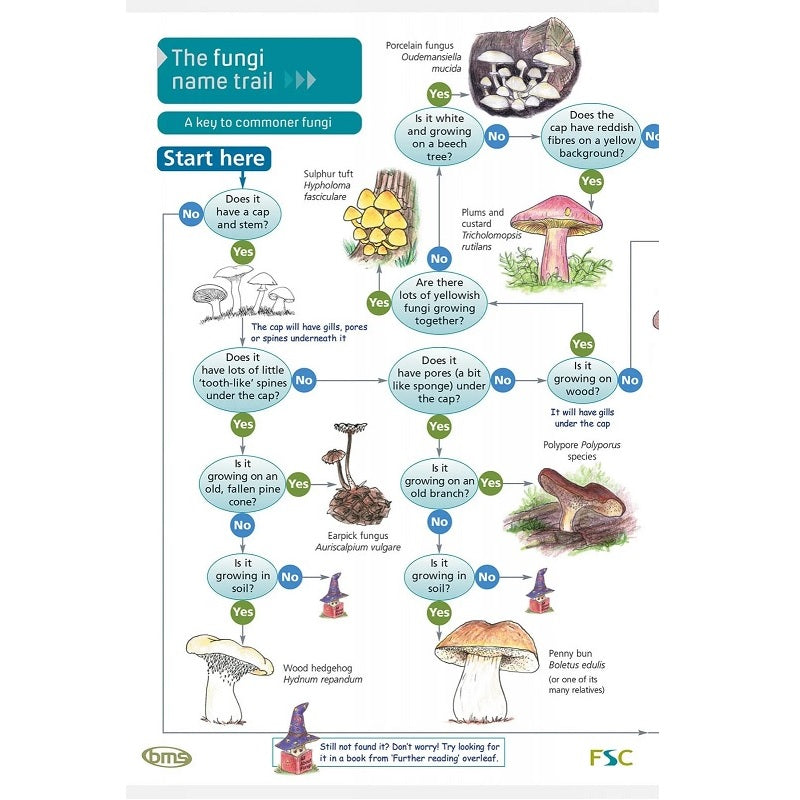
FSC Fold-out Chart - Fungi Name Trail
FSC Fungi name trail is a guide to the more easily recognised mushrooms and toadstools found in gardens, grassy places and woodlands. Use the simple flowchart based on shape and colour to move quickly to the illustrations for each fungus. Please note that this is not a guide to the identification of edible fungi.
Although we have tried to keep specialist terms to a minimum, some technical words are useful when discussing fungi. Accompanying text on the reverse side includes a guide to the main parts (cap, ring, stipe, volva and mycelium), plus features on the underside of the cap (pores, fills and teeth).
There is also straight forward instructions for marking a spore print. Plus how you can use a red balloon and toilet tissue to show how a fly agaric grows! Unlike plants, fungi cannot gain their energy directly from the sun by photosynthesis. Instead they have had to develop other ways to feed.
A few fungi feed off living trees or plants. These fungi are parasites, and they have a vital role in natural woodland. But the majority of fungi are decomposers or live in symbiosis with plants. The decomposer fungi break down dead wood and other plant and animal matter. They help recycle nutrients in woodlands.
Symbiotic fungi establish a physical link with another organism (plant, tree or alga). Over 80% of higher plants and trees gain additional mineral salts in this way. In return the plant sends some of its own surplus energy (sugars) down into the fungus. The FSC Fungi name trail was produced in partnership with the British Mycological Society.
Couldn't load pickup availability
Pickup currently unavailable at Tamarack Outdoors
Pairs well with
